The nighttime air was very warm and muggy, leading you to believe it was mid-summer, and not early June. These are the kind of nights that make it uncomfortable to sleep, unless you have A/C cooling you, or a fan blowing your way. But these are the perfect kind of evenings that flying insects thrive in-usually seeking out a mate, or perhaps something to feed on.

In the darkness near the edge of our woodlot, I hung a plain white sheet on the clothesline. I rigged up the small black light I purchased on-line, to a shepherd’s hook, plugged it in and waited. In less than one minute the first insects started to show up at the eerie blue light that reflected off the white sheet. Over the next hour and half the white sheet quickly was covered with hordes of just about every type of nocturnal flying bug I could think of-and some I didn’t expect!


Virginia Tiger Moth 
The Hebrew 
The Beggar
There were loads of moths (my primary target), caddisflies, mayflies, craneflies, beetles, midges and many other tiny crawling bugs I couldn’t identify. The black light even attracted several Wood Cockroaches (yes, they can fly)! Why does a black light work so well?
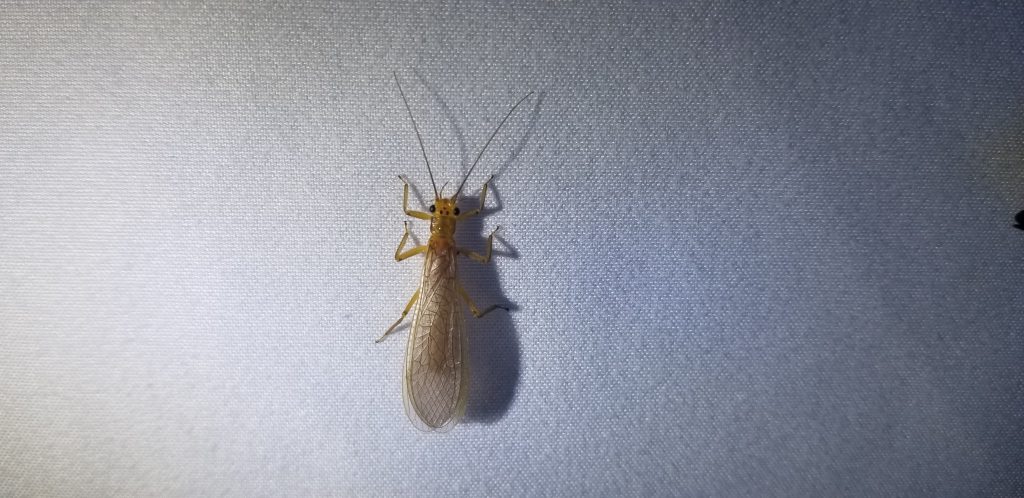
Stonefly 
Mayfly 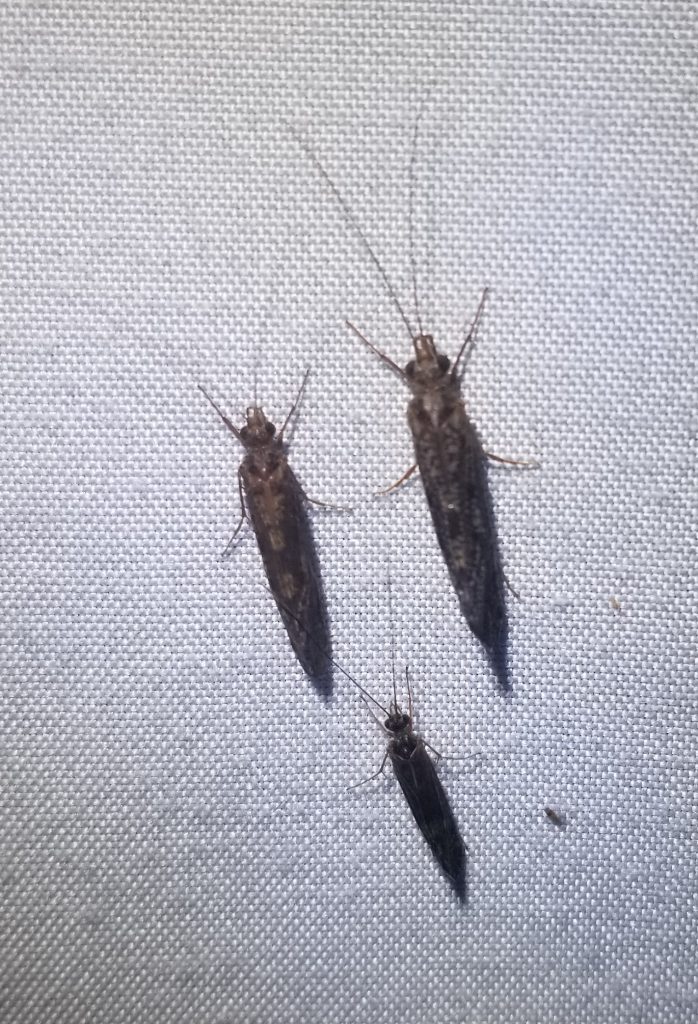
Caddisflies

Longhorn Beetle 
Grapevine Beetle 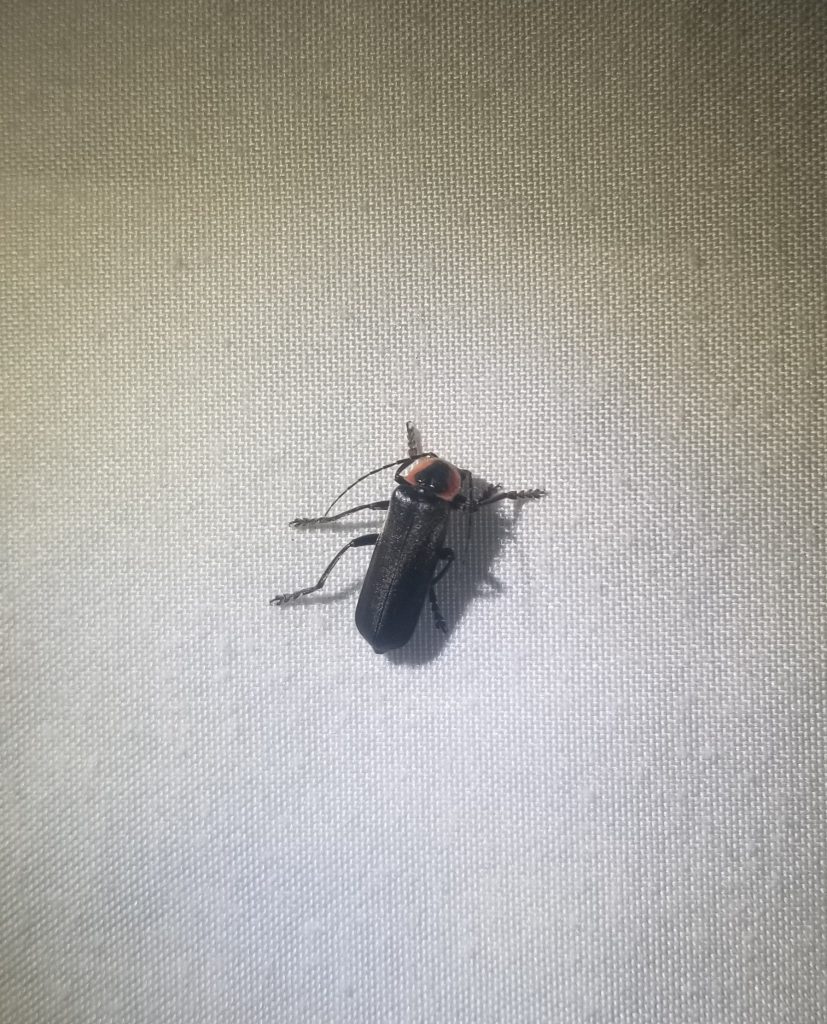
Black Firefly
Many insects can see ultraviolet light, which has shorter wavelengths than light visible to the human eye. For this reason, a black light will attract different insects than a regular incandescent light. This is the same theory behind people hanging “bug zappers” in their backyards. Unfortunately, black lights do not work well at attracting biting insects, and bug zappers harm more beneficial insects than pests.

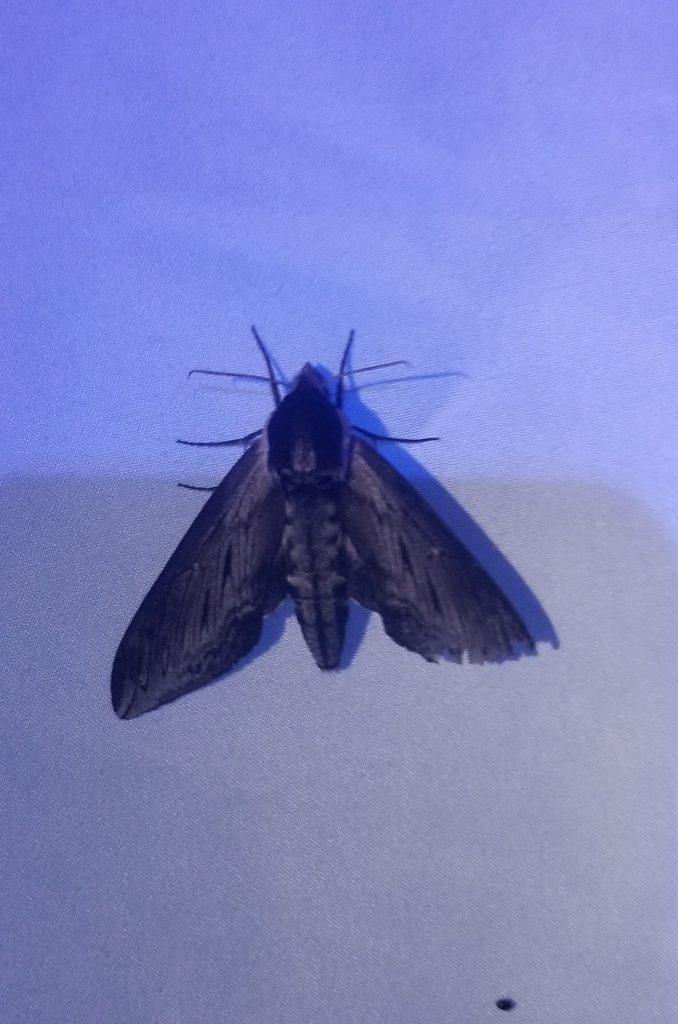
Laurel Sphinx 
White Spring Moth 
Eastern Tent Caterpillar
As I mentioned previously, my main goal was to see (and try to ID) the wide variety of moth species that live around our home. I’m amazed how many different kinds there are! Most of them are small, plain brown or gray-colored, but some are spectacular, with large bright-colored eye spots.

Rosy Maple Moth 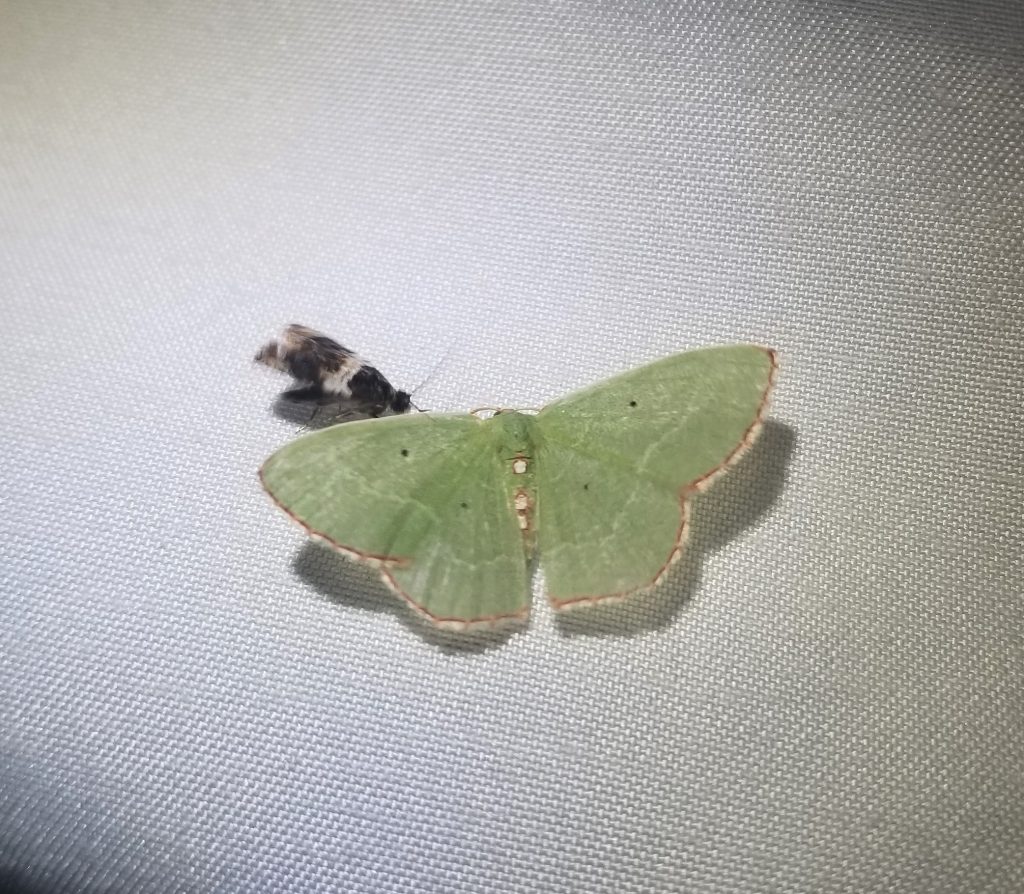
Red-bordered Emerald Moth
Some have amazing colors and patterns, with beautiful fern-like antennae-almost like they’ve been hand painted.

Others are downright weird-looking, and a few are even creepy! Most people have no idea the diversity of moth species that live around them, since they’re mainly nocturnal. I do not harm any of the moths or other insects I try to attract to my black light and white sheet, since many of them are important pollinators. I simply like to see what’s out there, and usually by dawn most have flown away.
However, when daylight approaches, many of the winged insects are still attached to the white sheet, making them easy prey for a few hungry birds. Our resident Gray Catbirds is one of the species that looks forward to my evening “sheet attractions,” since it takes advantage of an easy breakfast by simply picking them off!

As I mentioned earlier, hot, sticky nights seem to be the best conditions to attract flying insects. But you can draw in moths and other bugs to your light any time of the year, as long as the air temps are above 50 degrees F. However, late spring and summer are the still the most active seasons for the variety of insects that Fly By Night! Enjoy!